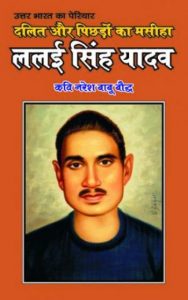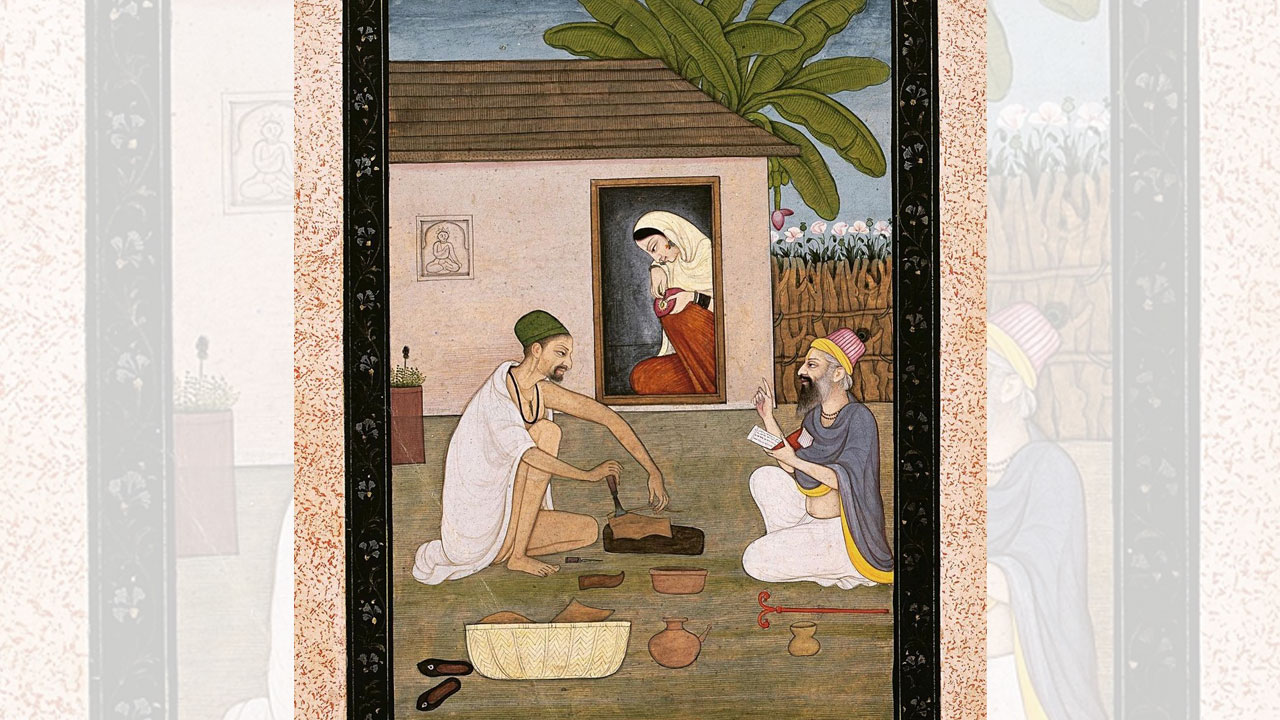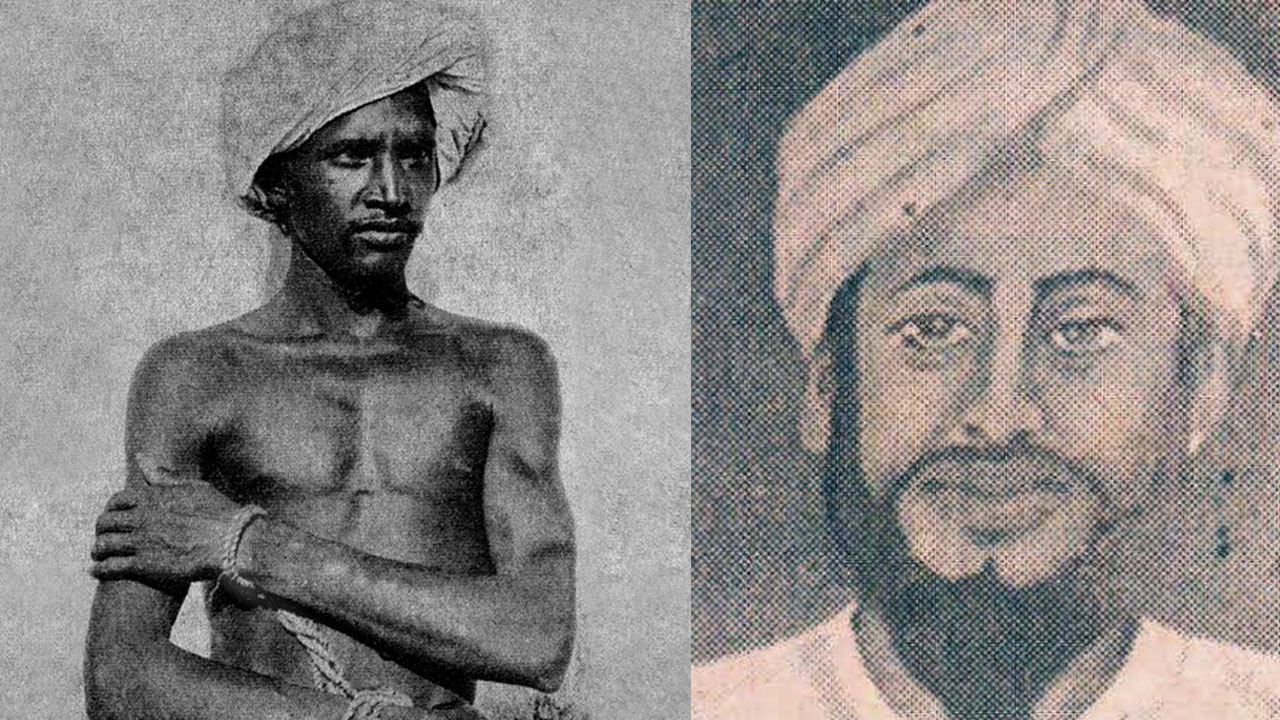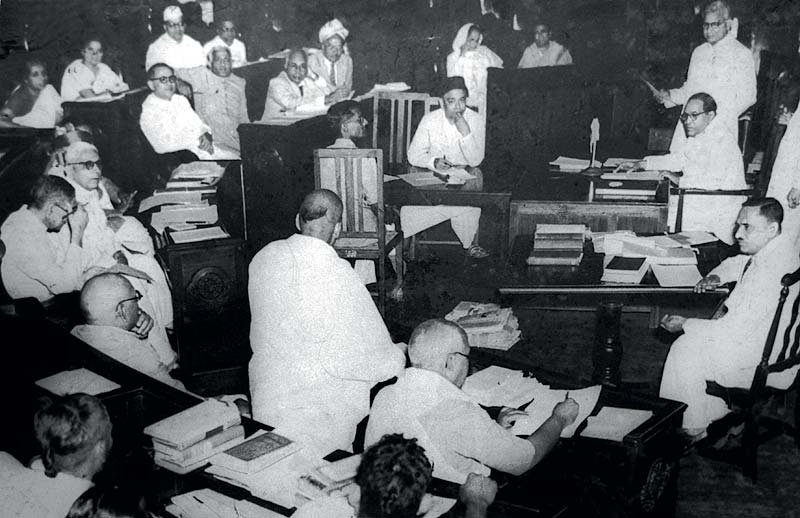I had become associated with Ambedkarites and the Buddhist Mission during my student days. Whenever any programme of the mission was held anywhere around where I lived, I made it a point to attend it. On 11 March 1973, Dalai Lama gave “diksha” in Buddhism to around 20,000 Dalits at a function in Ramlila Maidan, Delhi. I was one of them. That is where I saw Periyar Lalai Singh for the first time. A slight man wearing a sky-blue kurta-pyjama was selling books, hawking them in his sharp voice. He was Periyar Lalai Singh. Having won the Sachchi Ramayan lawsuit, he had already become a hero of the Dalits and OBCs. I had read his books but I was seeing him in person for the first time. Many people had surrounded him, which was natural. A writer loved by everyone, Lalai Singh had dropped his surname “Yadav” after embracing Buddhism. At the time, we admired only two writers – Chandrika Prasad “Jigyasu” and Periyar Lalai Singh Yadav. Both had changed the way we thought. Back then, a book of mine Buddha Ki Drishti Mein Ishwar, Brahma Aur Atma had been published but I was still unknown as a writer.
In 1978, my second book Dr Ambedkar Boudhha Kyon Bane was published. Around the same time, I launched the fortnightly Mook Bharat from Rampur. I sent a copy of the book and the inaugural issue of Mook Bharat to Lalai Singh. The issue carried an article praising Babu Jagjivanram, about which I have written in some detail in my reminiscences published earlier. In reply, I received a letter dated 2 February 1980 from Lalai Singh. It began like this: “ I received Mook Bharat. I went through it. My good wishes”. Then, he went on to talk about his physical afflictions. “I have cataract, also ‘kulang baat’ [arthritis in Ayurvedic jargon]. I’ve taken lots of medicines. There is no relief. I have started hating all doctors and vaidyas.” This was followed by a candid comment on Babuji. “These people are like the pet dogs of Kanjars – they bark at the prompting of their owners. Shri Jagjivanram used to bark like that and continues to. Jagjivanram’s job is only this: Whenever his owners feel that they want to attract the attention of the untouchables, he delivers a longish speech on the travails of the community, draws some praise and then falls silent. He can never give a practical shape to what he says and neither can he make his masters do it. Babu Jagjivanram is an untouchable, and he will die one. The same is true of Shri Ramdhan and Shri Motiram, Kanpur.” The letter then turns even more acerbic. It says something about Amedbkar Bhavan, New Delhi, and Atal Bihari Vajpayee. But that cannot be read as the ink has faded. The ink of a letter kept in a mud house for 30-35 years was bound to fade. That issue of Mook Bharat had also carried a statement of Ramdhan and an interview with Motiram Shastri – not the Motiram from Kanpur but a Buddhist scholar from Chandauli, Benaras.
The second time I met Lalai Singh was in October 1980. We both were attending a convention of Kanshi Ram’s BAMCEF in New Delhi. This was an important meeting and it gave me a major literary responsibility. I have given a detailed account of it in the publisher’s note of my book Dhammavijay (October 1981), which I am reproducing here.
“At the BAMCEF convention in October 1980, Periyar Lalai Singh showed me the book Kalvijay and told me, ‘Go through the lines underlined in red’. I could not ignore his command and took the book from him. I flipped through the initial pages. It was a historical play on the life of Emperor Ashoka written by Laxminarayan Mishra. I read all of the underlined text. I was shocked. I felt as if I have been hit with a hammer several times on my head. It was as if a clean, scented and sacred garden had turned into a desert. I reacted sharply. I told Lalai Singh, ‘This is a well-planned conspiracy to stigmatize and insult Buddhism. Whose evil mind is working behind this?’ But when he told me that the book was a part of the Hindi curriculum of the Agra and the Ruhelkhand Universities, everything became clear.
“Lalai Singh wanted the sale of Kalvijay to be stopped and a case under section 124A of the IPC to be filed against the author. Lalai Singh and Jagannath Aditya fought a long battle. Due to their efforts, lakhs of memoranda were sent to the President and Prime Minister and Governor of the Uttar Pradesh, and on 8-9 March 1980, a mega convention was held in Chakkipaat, Agra, under the leadership of Balasaheb Prakashrao Ambedkar. The convention passed a unanimous resolution demanding that copies of Kalvijay be seized. A delegation of Bhikshu Sangh met the prime minister with the same demand. This was the first time I had attended such a large convention.”
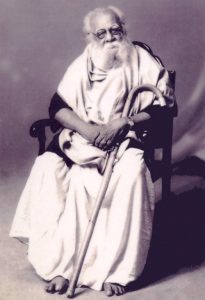
There were nationwide protests against Kalvijay and the entire credit for them goes to Lalai Singh. I congratulated him on his success. In reply, he wrote to me on 2 March 1981, “Do you think this propaganda will lead to the seizure of copies of Kalvijay? You are a kid. Justice is what the powerful command. If there was real justice, I would not have lost the battle on Sacchi Ramayan Ki Chabi, Aryon Ka Naitik Pol Prakash, Hindu Sanskriti Mein Varnavyavastha Aur Jatibhed.”
I then told Lalai Singh that I intended to write a rejoinder to Kalvijay. Thus came Dhammavijay – the product of my two months of labour. It was a frontal attack on Kalvijay. The book was published in October 1981 and I sent the first copy to Lalai Singh. He was very happy and told me that only I could have done this work. He also said that I should have titled the book Samrat Ashok Ki Dhammavijay. He sold more than a hundred copies of the book. Dhammavijay still figures in the catalogue of the Ashok Library. Dr D. R. Jatav wrote that only Dhammavijay could be a response to Kalvijay. A large number of Buddhist monks purchased this book. At the time, it was their favourite publication. There was probably no monk who did not have a copy of Dhammavijay. After reading the book, Bhadant Shant Rakshak wrote a long article in which he conferred on me the title of “protector of Shraman culture”.
Shortly afterwards, I took up a government job in Lucknow and couldn’t see Lalai Singh again. Due to the daily grind and busy schedule, I also lost touch with the mission. But Lalai Singh had cast an indelible influence on my mind.
In the 1970s, Bahujan leader and thinker Ramswaroop Verma launched a movement to promote Arjak ideology among the Dalits-OBCs. The objective was the elimination of Brahmanism. At the time, Verma was finance minister in the Uttar Pradesh government. He launched a weekly called Arjak from Lucknow. Later, he founded a political party with the same name. Lalai Singh also became associated with the Arjak movement. Their shared ideology brought them together. Verma had written a touching obituary of Lalai Singh. Jagannath Aditya, a close associate of Lalai Singh, has reproduced it in his book:
“He rushed from place to place to campaign for me in elections. He did not care if he was hungry or thirsty. His speeches were forthright. I am yet to see a fearless person like him. One day, when Lalai Singh was returning after campaigning with my workers, riding a tractor trolley, near Khatkar village, someone fired at him. He ducked and the bullet grazed his ear. The villagers asked him to stay in the village for the night but he refused. ‘Come on, this was just a country-made gun. I have baked rotis amid the rumble of cannons’, he said.”
He was not wrong. In 1933, he had joined the Gwalior Armed Police as a constable. But two years later, he was dismissed from service for supporting the Congress’ Swaraj movement. He appealed against his dismissal and was reinstated. He founded the Non-Gazetted Mulajiman Police and Army Sangh in Gwalior and was unanimously elected its president. This organization raised the problems of police and army personnel and took on the top officers.
When Indians formed Gadar Party in America under the leadership of Lala Hardayal, a book called Soldier of the War was written to exhort the jawans of Indian army to join the freedom movement. Along the same lines, in 1946, Lalai Singh wrote a book titled Sipahi Ki Tabahi. It was not printed but was typed out and distributed among the constables. As soon as the inspector general came to know of it, he ordered its seizure. Sipahi Ki Tabahi was written in a conversational style. Had it been published today, it would have been on a par with books like Kisan Ka Koda and Achchooton Ki Kaifiyat written by Mahatma Phule. Jagannath Aditya has quoted some portions of Sipahi Ki Tabahi in which the constable and his wife talk about the miseries of their domestic life. It ends thus: “The fact is that the paradise and hell are imaginations of the priests, pundits and maulvis. But if you want to see a real hell, just visit the home of a constable. The reason this hell exists is the Scindia government’s mismanagement. This hell has to be ended; it has to be reversed under any circumstances. All your demands will be accepted when the people will rule over the people.”
A year later, Lalai Singh led a strike of the Gwalior police and army. He was arrested on 29 March 1947 and was sentenced after trial to five years’ rigorous imprisonment. He had to spent nine months in jail. Following Independence and the merger of the Gwalior state with the Indian union, he was released on 12 January 1948.
After retirement from government service in 1950, he shifted base to his ancestral village Jhinjhak and stayed there till his death. He started working for societal change and used literature as his tool. He founded a publication named Ashok Pustakalaya and established a printing press called Sasta Press. He was a great playwright, as is evident from his play Sipahi Ki Tabahi. He began his writing career with a play. He wrote five plays: Angulimal Natak, Shambuk Vadh, Sant Maya Balidan, Eklavya and Nag Yagya Natak.
Swami Achhootanand had written Sant Maya Balidan in 1926 but had become unavailable. By writing the play, Lalai Singh fulfilled an important need. He also wrote three books in prose: Shoshiton Par Dharmik Dakaiti, Shoshiton Par Rajnitik Dakaiti and Samajik Vishamta Kaise Samampta Ho. His was a literature parallel to the traditional Hindi literature. The literature of an ideological revolution changed the views of Dalit classes on Hindu heroes and Hindu culture. It was a new discourse that was until then missing from Hindi literature. Lalai Singh’s writings created a rebel consciousness among the Bahujans against Brahmanism and sowed the seeds of Shraman culture and ideology in their hearts and minds.
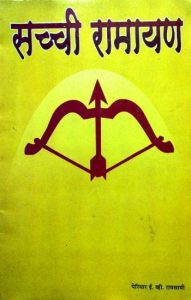
Around the same time (possibly 1967), E.V. Ramasamy Naicker came to Lucknow to attend a convention on minorities. At the time, he was the revolutionary leader of the Bahujans of the entire country. Lalai Singh was very impressed with him. He met him and sought his permission to translate his book The Ramayana: A True Reading into Hindi. But Chandrika Prasad “Jigyasu” had already got the permission from him to translate this and three other books. So, Periyar advised him to wait for some time. Jigyasu had already had Periyar’s three books, A Pen Portrait (a brief autobiographical account), Philosophy and Social Reform and Revolution (written by A.M. Dharmalingam in English) translated by Dayaram Jain and published in a single volume titled Periyar E.V. Ramasamy Naicker in 1970 under the Bahujan Kalyan Mala series. But he could not get The Ramayana: A True Reading translated. On 1 July 1968, Periyar wrote a letter to Lalai Singh permitting him to have the book translated and published. He wrote, “The person who was given the permission earlier could not get it published, hence the permission is given to you.”
Lalai Singh had the book translated into Hindi and published under the title Sachchi Ramayan in 1968. The book kicked up such a row that soon the flag-bearers of Hinduism took to the streets to oppose it. The then Uttar Pradesh Government came under pressure and on 8 December 1969 banned the book and ordered seizure of its copies claiming that the book had hurt religious sentiments. The matter went before the high court, where Advocate Banwari Lal Yadav forcefully argued in favour of Sachchi Ramayan. On 19 January 1971, Justice A. Kirti quashed the government’s ban order, directed it to return all the seized copies and pay the appellant (Lalai Singh) Rs 300.
In his original book, Periyar had not given references to prove his contentions. To make up for that deficiency, Lalai Singh wrote a book Sachhi Ramayan Ki Chabi, in which he mentioned the references and evidence necessary to understand Sachhi Ramayan.
Writing about how Lalai Singh became Periyar Lalai Singh, Jagannath Aditya says that Lalai Singh was invited to speak at a condolence meeting on 24 December 1973 after the death of Periyar. Aditya does not mention the venue of the meeting. The south Indian audience at the meeting was so impressed by Lalai Singh’s speech that they declared him the next Periyar in the meeting itself. Subsequently, he became famous as the Periyar of the Hindi belt.
This matchless fighter, revolutionary writer, publisher and fiery hero of rebel consciousness against Brahmanism was born on 1 September 1921 at Kathara village near Jhinjhak Railway Station, about 70 km from Kanpur. He passed away on 7 February 1993. I have taken up a project to publish his works. Let us see how long it takes.
(Forward Press also publishes books on Bahujan issues. Forward Press Books sheds light on the widespread problems as well as the finer aspects of the Bahujan (Dalit, OBC, Adivasi, Nomadic, Pasmanda) community’s literature, culture, society and culture. Contact us for a list of FP Books’ titles and to order. Mobile: +919968527911, Email: info@forwardmagazine.in)
